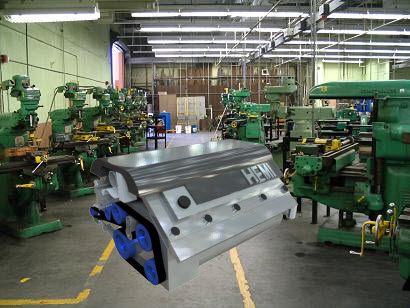Rendering Terms on the SketchUp Sage Site
-
I have been working on the Rendering Terms section of the SketchUp Sage site. (Brought over from the former SuWiki)
These are for all forms of rendering - SU OpenGL, Photorealistic, Non-Photorealistic.
What ideas do you have that would be good additions to the list. And if you take a look at them and want to suggest improvements let me know (Or volunteer to help edit the SketchUp Sage site)
Al
Here are the terms we have now (not all the write-ups are complete)
A
Alpha Channel
Ambient Light
Anti-Aliasing
B
Batch Rendering
Bump Mapping
C
Caustics
Clay Rendering
Cove Lighting
D
Depth of Field
E
Edge Highlighting
F
Fog
Fractal Plants
G
Global Illumination
Glow
H
HDRi
I
Indirect Lighting
L
Lighting Channels
M
Mirror
Morphing
Motion Blur
N
Non-Photorealistic Rendering
Normal
O
OpenGL
P
Panorama
Perspective
Photorealistic
R
Radiosity
Ray Trace
Reflection
Refraction
Renderer
Rendering
RPC Objects
S
Section Plane
Shading
Shadows
Silhouette
Soft Shadow
Solid Materials
Specular Reflection
T
Texture Mapping
Translucency
Transparency
X
X-Ray
Z
Z-Fighting -
frustum
john
-
Some more (in alphabetical order):
Alpha mask render
Animation (camera and object)
Atmosphere
Biased rendering
CPU rendering
Depth map render
Displacement (map)
Double sided materials
Ecosystem
Gamma value/correction
GPU rendering
Layered materials
Lighting analysis/study
Instancing
Interactive rendering
Photon mapping
Procedural material
Proxy
Real time rendering
Shift lens
Texture baking
Unbiased rendering
Walkthrough (export) -
Thanks for these ideas. They are well thought out.
-
Speaking of specifically renderers for SketchUp, maybe rendering PhotoMatched models would also be interesting (with its specially distorted materials).
-
Alpha Mask Rendering
I am familiar with creating a rendering which fills the alpha channel of the .PNG image wherever there is background.

This makes it easy to place the rendering in front of a background in PhotoShop.

However, some other renderers have a different definition
From Kerkythea:
[pre:2ik0fsac]Mask Render (Alpha Mask)
Renders a black and white image for a selected object in the scene representing
the spatial relationship of the selected object to its field. This is commonly
used in conjunction with a photo editing program in order to ‘mask’ an object
using the mask render in the ‘Alpha’ channel.[/pre:2ik0fsac]And from Pheoonix Viewer:P
[pre:2ik0fsac]Alpha Mask Rendering: These option control when alpha masking should be
used in an attempt to mitigate the well known alpha sorting issue, in which
prims behind other prims may appear to flicker in front. Please note that enabling
this can have side effects of its own, since as objects not rendering at all.[/pre:2ik0fsac]
These both imply that the alpha channel is applied to individual objects rather than the whole scene.
Can you add any insight?
-
Why are the reflections so pixel-ated (if that's the right term)...?
-
@frederik said:
Why are the reflections so pixel-ated (if that's the right term)...?
This was rendered with a very low resolution HDRi sky. The idea here was to have imprecise reflections, which do not represent any actual object. The HDRi is actually a forest, with light filtering through - but we didn't want to see the actual trees and leaves - but rather a generic impression of shadows and highlights. (I think it works well when placed in the warehouse setting. Because the highlights are imprecise, the eye might imagine they come from the lights in the warehouse)
If you render with a higher resolution HDRi sky, you get more precise reflections.
The purpose of the example here, however, was to show the effect of the Alpha Mask in the image.
-
I didn't notice the term "instancing" or variations of this in the lists. Would this be appropriate to add?
Edit: Scratch this comment, as Gaieus did have it in his list.
-
Yes, I collected some terms that I encounter daily here from my "recollection" (not as if I ere a great rendering talent* - or even biased towards any particular rendering engine). Hanging out on the forums, they just stick on me...
*Some folks would even call me "a rendering idiot"

-
And you even alphabetized everything - except things that start with I - like Instancing.
Thanks for inspiring me - I have added 3 of these to the Sage site already.
Feel free to add criticisms, or other ideas.
-
Hehe. You got me. I should go back to school.

Does iRender do displacement mapping? I did not know that, great!
-
@gaieus said:
Hehe. You got me. I should go back to school.

Does IRender do displacement mapping? I did not know that, great!
Yes - but we haven't found a great use for it yet. We worked on a ruby to create bump maps and displacement maps from SketchUp models. Basically you render the scene - say a wall with 3D depth - or a window treatment - of rocks - with a camera point straight on - in OpenGL - but save a greyscale image using the Z-depth for the intensity, and then use it as a bump map or displacement map. (This could be done purely in Ruby as well by getting the Z-distance at each pixel and creating an image using the Z-distances for greyscale intensity)
It was hard to find a good example for it. e.g. Background windows which would have many fewer faces in SketchUp - but still render will from different angles because of the mapping.
Here is a sample from of the image from the procedure - which we wrote for experimentation but never put into a product.

The problem was creating a SketchUp model good enough to use for the bump maps. A brick wall would be easy - but it also easy to create a decent bump map for brick using Paint.
So you need a more complex sculptured surface - or rocks. When we asked at the time no one could supply a good model of rocks which would be useful for creating a bump map or displacement map image.
Advertisement








